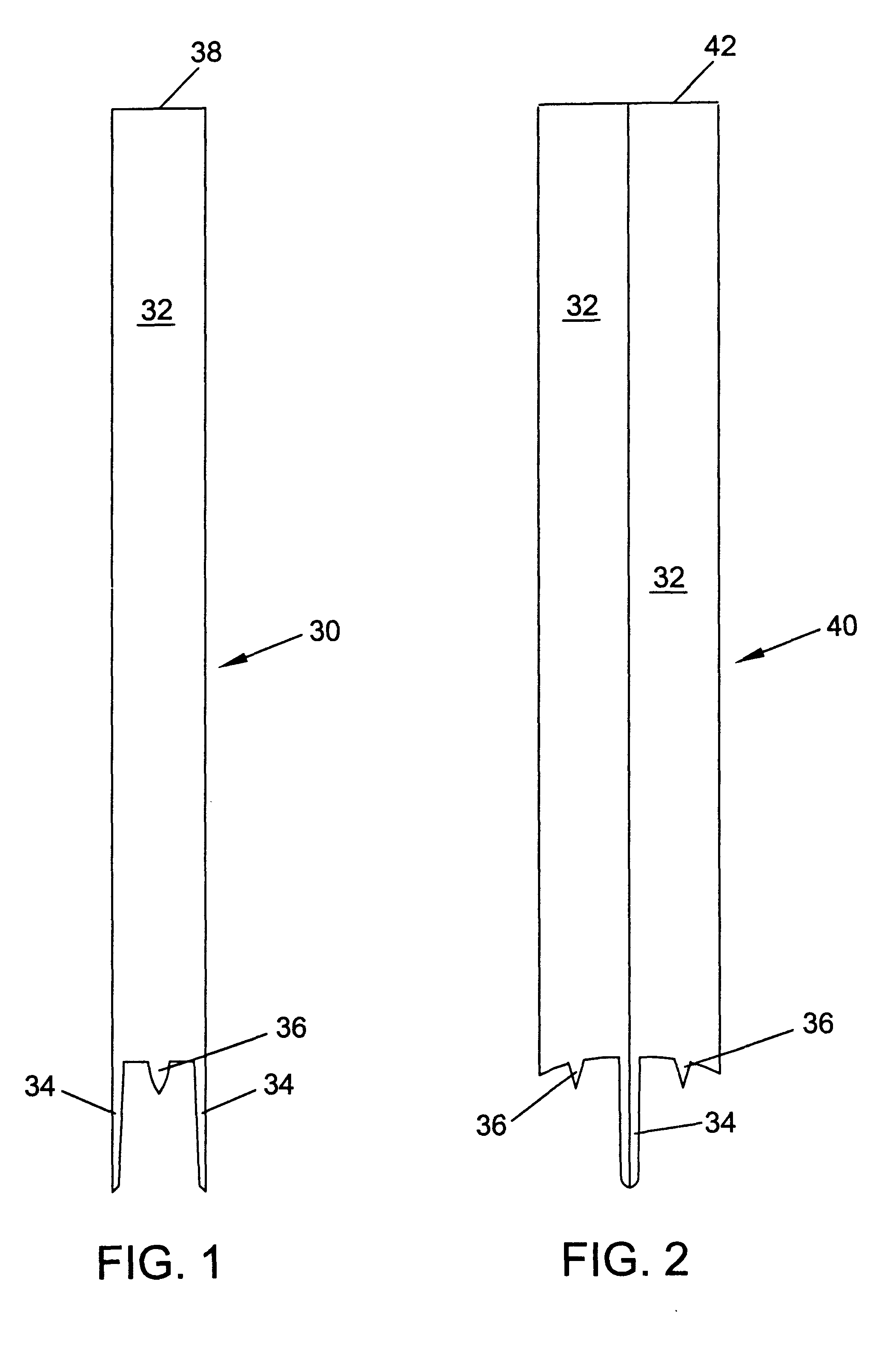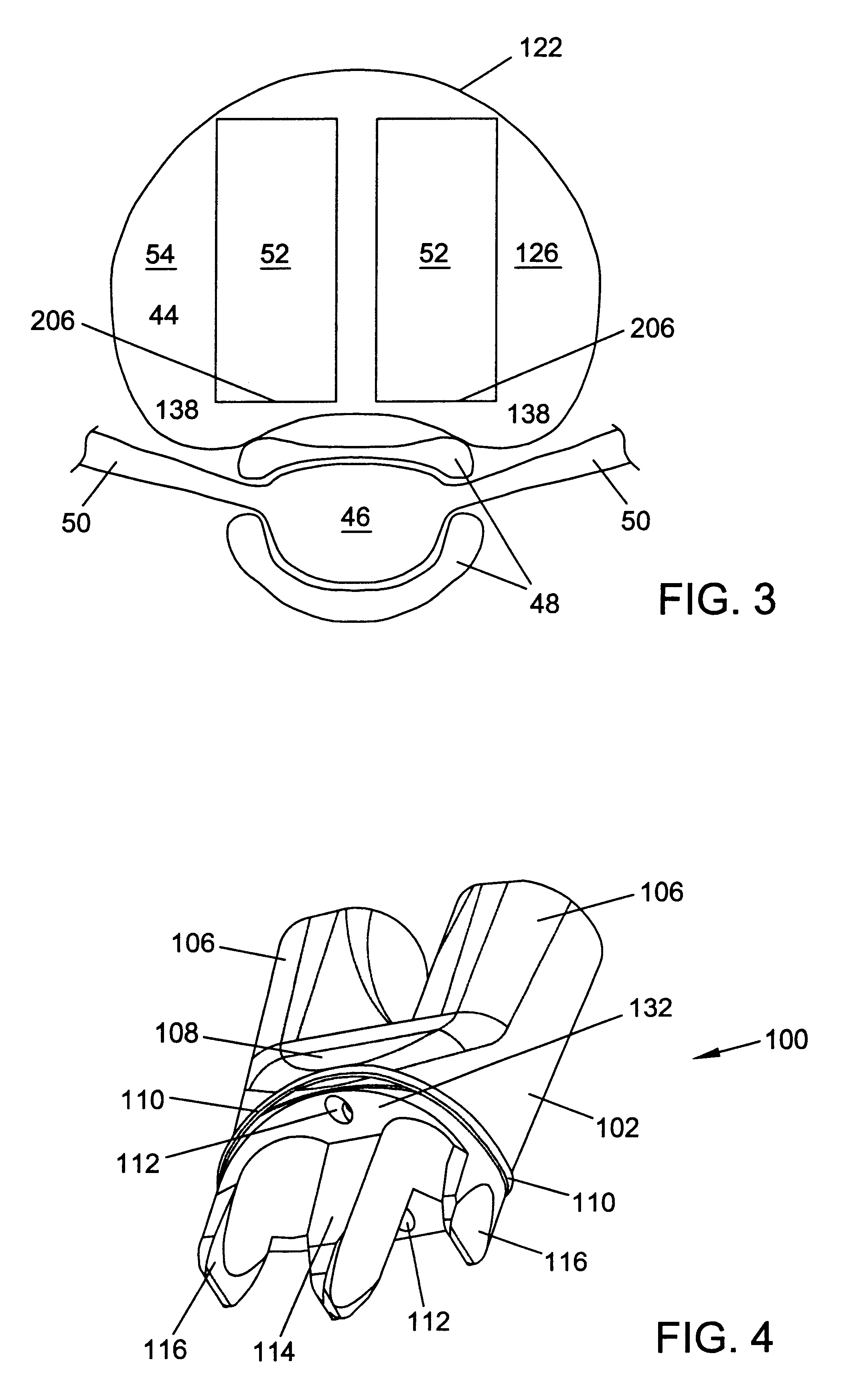Instrument and method for implanting an interbody fusion device
a technology of interbody fusion and instrument, which is applied in the field of spinal fixation and fusion systems, can solve the problems of destabilizing the spinal column, difficult alignment, and difficulty in correct alignment and spacing of holes
- Summary
- Abstract
- Description
- Claims
- Application Information
AI Technical Summary
Problems solved by technology
Method used
Image
Examples
Embodiment Construction
Referring to the drawings, and particularly to FIG. 4, a holder or base that may be used as an implant insertion guide during a spinal fusion procedure is designated generally as 100. A holder may be used to support a sleeve during a spinal fusion procedure. A base may be used with or without a sleeve during a spinal fusion procedure. For illustrative purposes only, the following description will describe a holder. A person having ordinary skill in the art will understand that a holder may be used as a base, and a base may be used as a holder. A sleeve may be advantageously used during an implant insertion procedure. A top surface of the sleeve may be a stop for an instrument that limits an insertion depth of the instrument into a disc space.
FIGS. 4-10 show views of embodiments of holders 100. A holder 100 may include body 102, conduits 104 through the body, conduit extenders 106, flared portion 108, flange rim 110, fastener holes 112 distractor 114, and lateral distractors 116. In ...
PUM
 Login to View More
Login to View More Abstract
Description
Claims
Application Information
 Login to View More
Login to View More - R&D
- Intellectual Property
- Life Sciences
- Materials
- Tech Scout
- Unparalleled Data Quality
- Higher Quality Content
- 60% Fewer Hallucinations
Browse by: Latest US Patents, China's latest patents, Technical Efficacy Thesaurus, Application Domain, Technology Topic, Popular Technical Reports.
© 2025 PatSnap. All rights reserved.Legal|Privacy policy|Modern Slavery Act Transparency Statement|Sitemap|About US| Contact US: help@patsnap.com



